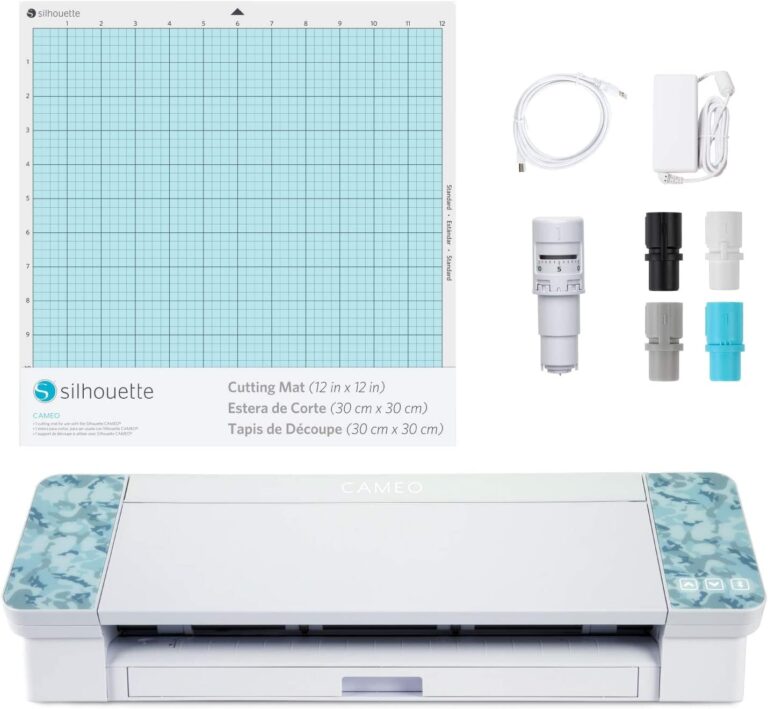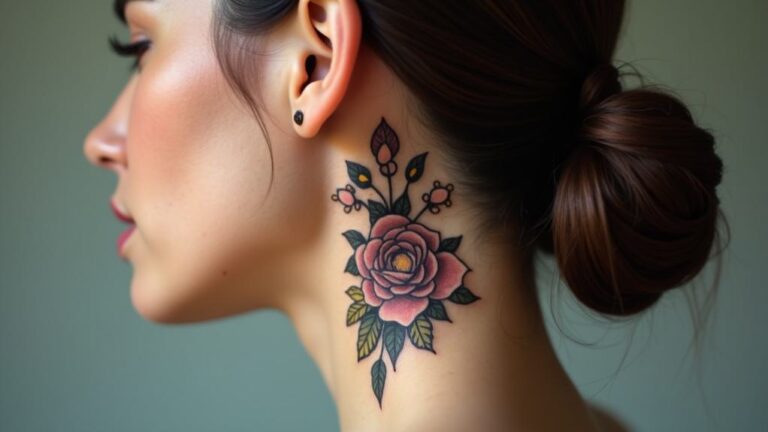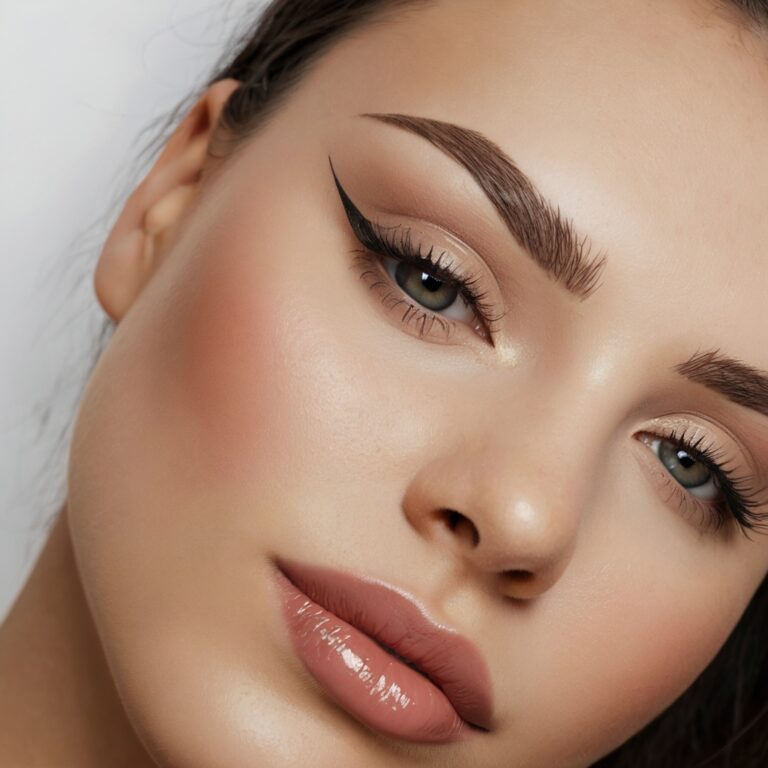Getting a new tattoo is always exciting, but it’s crucial to remember that proper aftercare is key to ensuring your ink heals beautifully. One of the first steps in this process is understanding how long to leave your tattoo wrapped. It might seem like a minor detail, but it’s a decision that can significantly affect your tattoo’s healing process.
Most tattoo artists will wrap your new masterpiece before you leave the studio, but the guidance on how long to keep it covered can vary. Don’t worry, though; we’ve got you covered with expert advice to navigate this crucial step. Whether it’s your first tattoo or your fifteenth, knowing the ins and outs of wrapping can make all the difference in your tattoo’s healing and longevity.
Key Takeaways
- Wrapping your new tattoo is crucial for preventing infection, maintaining moisture, and protecting against mechanical damage. Your tattoo artist will advise on the best type of wrap to use based on your tattoo’s location and size.
- How long to keep your tattoo wrapped varies significantly. Small to medium tattoos typically require 2-4 hours of wrapping, while larger or more detailed designs might need to be covered for up to 24 hours. Tattoos in sensitive or high-motion areas may have unique requirements.
- Knowing when to remove the wrap is important for the healing process. Signs to watch for include excessive moisture, intense itching, and the general timeframe advised by your tattoo artist. If the wrap becomes compromised in any way, it’s also time to remove it.
- Caring for your tattoo after unwrapping involves initial cleaning with lukewarm water and fragrance-free soap, followed by daily care that includes gentle washing, light moisturizing, and avoiding direct sunlight and tight clothing until fully healed.
- After unwrapping your tattoo, follow the dos and don’ts of aftercare such as gently cleaning the area, patting it dry, applying a thin layer of aftercare product, and avoiding re-wrapping, hot water, and heavy ointments to ensure a smooth healing process.
- Proper aftercare, starting with how long to leave your tattoo wrapped and how to care for it afterward, is essential for the ink to heal properly and remain vibrant, protecting both your tattoo’s appearance and your overall health.
Why is wrapping your tattoo important?
Wrapping your tattoo plays a pivotal role in your tattoo care regimen. Immediately after your tattoo artist finishes inking, they’ll cover your new masterpiece with a protective layer. This isn’t just standard practice—it’s a crucial step to ensure your tattoo starts healing properly right off the bat.
First and foremost, wrapping protects against infection. Fresh tattoos are essentially open wounds, making them susceptible to bacteria and other pathogens. A proper wrap acts as a barrier, keeping those unwanted invaders at bay. It’s your first line of defense in a world teeming with potential irritants and contaminants.
Moreover, wrapping helps to maintain the optimal moisture balance. Your skin needs a certain level of hydration to heal correctly but leaving a tattoo exposed can lead to dryness, and over moisturizing can clog pores, causing issues like pimples or at worst, an infection. The right kind of wrap allows your skin to breathe while retaining enough moisture to promote healing.
Another significant benefit is that wrapping reduces the risk of mechanical damage. Clothes, sheets, and even your own fingers can abrade or scratch the tender, healing skin. This not only hurts but can also disturb the ink settling into your skin, potentially leading to patchy areas requiring touch-ups.
Bear in mind, not all wraps are created equal. Your tattoo artist might use traditional cling film, breathable medical-grade bandages, or even newer tattoo-specific products that offer extended protection. Each type has its pros and cons, and your artist will recommend the best option based on your tattoo’s location, size, and their personal experience with how ink heals.
Stay attentive to how your tattoo feels once it’s wrapped. Signs of discomfort or unusual reactions should prompt an immediate consultation with your tattoo artist. Remember, the wrapping is just the beginning. Proper care during this initial stage sets the foundation for a vibrant, healthy tattoo for years to come.
The role of the initial bandage
When you get a new tattoo, the initial bandage applied by your tattoo artist isn’t just a temporary cover—it plays several key roles in the healing process. Understanding why it’s there and how it helps can assure you’re taking the best care of your new ink from the moment you leave the tattoo studio.
First and foremost, the initial bandage protects your new tattoo from bacterial infections. Fresh tattoos are essentially open wounds, making them susceptible to bacteria and other pathogens. By providing a barrier against these unwanted invaders, the bandage helps prevent infections that could not only harm your health but also the appearance of your tattoo.
Another important function of the initial bandage is to keep the tattooed area moist. After inking, your skin needs an optimal balance of moisture to start the healing process effectively. This bandage retains the natural oils and ointment applied by your artist, preventing the tattoo from drying out and cracking. Dryness can lead to ink fallout and poor healing, resulting in a tattoo that looks faded or blurry.
Lastly, the bandage minimizes the risk of mechanical damage. Everyday activities and even clothing can rub against your fresh tattoo, causing friction that can displace ink and damage the delicate healing skin. With the protective layer of the bandage, you minimize these risks, ensuring your tattoo has the best chance to heal flawlessly.
Remember, the effectiveness of the initial bandage relies significantly on how long it’s left on. Too short, and you risk premature exposure to bacteria and friction; too long, and you might create a moist environment prone to bacteria growth. Your tattoo artist will provide you with a recommended timeframe, which typically ranges between a few hours to several days, depending on various factors including the tattoo’s size, location, and the type of bandage used.
How long should you keep your tattoo wrapped?
When you get a new tattoo, one of the first pieces of advice you’ll hear from your artist is about the critical period it should remain wrapped. The general recommendation is to keep the bandage on for at least a few hours. However, this timeframe can vary based on the size, location, and complexity of your tattoo. Here’s a quick guide to help you figure out how long to keep that wrap in place.
- Small to Medium Tattoos: For smaller tattoos, it’s usually advised to leave the wrapping on for about 2 to 4 hours. These tattoos have a relatively minor impact on the skin and require less time to start the initial phase of healing.
- Large or Detailed Designs: If your tattoo is more extensive or contains a lot of detail, your artist might suggest keeping it wrapped for up to 24 hours. Larger tattoos affect more skin area and thus need more protection in the critical initial hours.
- Sensitive Areas: Tattoos in sensitive or high-motion areas, like joints, may need to be kept wrapped longer to prevent excessive movement and irritation during the early healing stages.
Here’s a summary table based on tattoo size and location:
| Tattoo Size/Location | Recommended Wrap Time |
|---|---|
| Small to Medium | 2-4 hours |
| Large or Detailed | Up to 24 hours |
| Sensitive Areas | Varies |
It’s vital to follow your tattoo artist’s specific advice as they know the ins and outs of your individual case. After removing the wrap, maintaining a clean and moisturized tattoo is crucial to ensure proper healing. Remember, the right aftercare will significantly affect your tattoo’s final appearance and longevity.
Signs that it’s time to remove the wrap
When you’ve got a new tattoo, knowing when to remove the wrap is crucial for the healing process. Your tattoo artist’s advice is paramount, but there are also some telltale signs indicating it might be time to let your skin breathe.
Firstly, excessive moisture under the wrap is a clear signal. If you notice that the area is becoming overly wet or gooey, it’s likely time to remove the wrapping. This moisture can create an environment that fosters bacteria, which could potentially lead to infection.
Another sign is if you experience intense itching or irritation under the wrap. A bit of itching is normal as the tattoo heals, but if it becomes unbearable, it might be because the wrap is causing irritation. Removing the wrap and gently washing the tattoo with fragrance-free soap can alleviate this discomfort.
Time is also a straightforward indicator. As mentioned earlier, wraps generally stay on for 2 to 24 hours depending on various factors such as size, location, and complexity. If you’ve hit the upper limit of this timeframe, it’s advisable to remove the wrap to prevent overhydration of the skin which can affect the healing process.
Lastly, if the wrap itself becomes loose or compromised in any way (e.g., it gets dirty or starts peeling off), it’s safe to say it’s time to take it off. A compromised wrap won’t protect your tattoo from bacteria and other contaminants.
Remember, after removing the wrap, gently wash the area with lukewarm water and a mild, antibacterial soap. Then, pat it dry with a clean towel or let it air dry. Subsequent care is crucial for a well-healed tattoo, so ensure you follow all aftercare instructions provided by your tattoo artist.
Unwrapping your tattoo: the dos and don’ts
When it’s finally time to unwrap your tattoo, it’s crucial to do so with care and attention. The unwrapping process is as important as the initial aftercare steps that follow. Begin by thoroughly washing your hands with antibacterial soap to prevent introducing bacteria to your new ink. It might feel exciting, but remember, patience and gentleness are key.
Dos:
- Gently Remove the Wrap: Start by carefully peeling off the bandage or wrap. If it sticks, do not force it. Instead, lightly wet the area with lukewarm water to help it release, ensuring you avoid damaging the skin.
- Cleanse the Area: Using lukewarm water and a mild, fragrance-free soap, gently cleanse the tattooed skin. This step is essential for removing any blood, plasma, or excess ink. Be gentle, and do not use a cloth or sponge that could irritate the skin.
- Pat Dry: After cleaning, pat the area dry with a clean, soft towel or paper towel. Do not rub the tattooed area as this can cause irritation.
- Apply a Thin Layer of Aftercare Product: Once completely dry, apply a small amount of aftercare product recommended by your tattoo artist to keep the tattoo moisturized.
- Avoid Hot Water: Hot water can not only be painful on your new tattoo, but it can also cause the pores to open and ink to leak out, affecting the tattoo’s quality.
- Do Not Re-Wrap: Once you’ve removed the initial wrapping, there’s no need to re-wrap your tattoo. Letting your skin breathe is vital for the healing process.
- Stay Away From Heavy Ointments: Heavy ointments can clog pores and suffocate the skin, hindering the healing process. Stick to light, breathable moisturizers.
By following these dos and don’ts, you’re setting your tattoo up for a smooth healing process. Remember to always listen to your body and consult your tattoo artist if you’re unsure about any step in your aftercare routine.
Caring for your tattoo after it’s unwrapped
Once you’ve gently unwrapped your new tattoo, it’s crucial to shift your focus towards proper aftercare to ensure that your ink heals beautifully and lasts a lifetime. The first few weeks are vital for your tattoo’s healing process.
Initial Cleaning
After unwrapping, your tattoo needs to be cleaned to prevent any risk of infection and to kickstart the healing process. Here’s how:
- Gently wash the area with lukewarm water and fragrance-free soap.
- Pat the area dry with a clean paper towel.
- A light application of a recommended aftercare product can greatly aid in the healing.
Daily Care
Following the initial cleaning, daily care should become routine:
- Wash your tattoo 2-3 times a day with lukewarm water and mild soap.
- Keep the tattoo lightly moisturized with an aftercare cream or lotion.
- Ensure your hands are clean every time you touch your tattoo to avoid introducing bacteria.
Healing Process
The healing process typically spans 2-4 weeks, though individual experiences may vary. During this period, you’ll notice the tattoo may start to peel and itch, indicating that healing is underway. It’s important not to pick or scratch at your tattoo, as doing so can remove ink or cause scarring. Instead, lightly pat the area if itching becomes intolerable.
- Do keep your tattoo clean and moisturized.
- Don’t soak your tattoo in water (no swimming or long baths) until fully healed.
- Do protect your tattoo from direct sunlight to prevent fading.
- Don’t wear tight clothing over the tattoo to avoid irritation and breathability issues.
Proper aftercare isn’t just about maintaining your tattoo’s appearance; it’s about safeguarding your overall health. Following these guidelines ensures that your tattoo heals properly, remains vibrant, and continues to be a source of pride for years to come.
Conclusion
Navigating the initial stages of your tattoo’s healing process is crucial for its longevity and vibrancy. Remember, unwrapping your tattoo with care, cleansing gently, and applying the right aftercare product are steps that set the foundation for a beautifully healed piece. Keeping the tattoo clean and moisturized, while adhering to the dos and don’ts outlined, will not only maintain its appearance but also protect your health. Trust the process, be patient, and give your new ink the attention it deserves. With the right care, your tattoo will soon be a stunning addition to your body art collection.
Frequently Asked Questions
How long should a new tattoo be kept wrapped?
A new tattoo should typically be kept wrapped for a few hours to up to 24 hours. The exact duration can depend on the tattoo artist’s advice and the type of wrap used.
What is the recommended process for unwrapping a tattoo?
The recommended process involves being gentle and patient. Use lukewarm water and mild, fragrance-free soap to carefully cleanse the tattooed area. After unwrapping, avoid rushing or using force.
What steps should be taken after unwrapping a tattoo?
After unwrapping, the tattoo should be washed with lukewarm water and mild soap, then patted dry. Apply a thin layer of recommended aftercare product to keep it moisturized.
How often should a new tattoo be washed and moisturized?
A new tattoo should be washed 2-3 times a day and kept lightly moisturized. It’s important to avoid over-moisturizing to prevent any negative effects on the healing process.
What are the main dos and don’ts for tattoo aftercare?
Do: Use light, breathable moisturizers, and protect the tattoo from direct sunlight. Don’t: Re-wrap the tattoo, soak it in water, use hot water, or pick at peeling skin.
How long does the tattoo healing process typically take?
The healing process for a tattoo generally takes 2-4 weeks. However, healing duration can vary based on the tattoo’s size, location, and individual health factors.
Can I protect my new tattoo from the sun?
Yes, it’s crucial to protect your new tattoo from direct sunlight. Use clothing to cover the tattoo or apply a broad-spectrum SPF 30 sunscreen after the initial healing phase.







